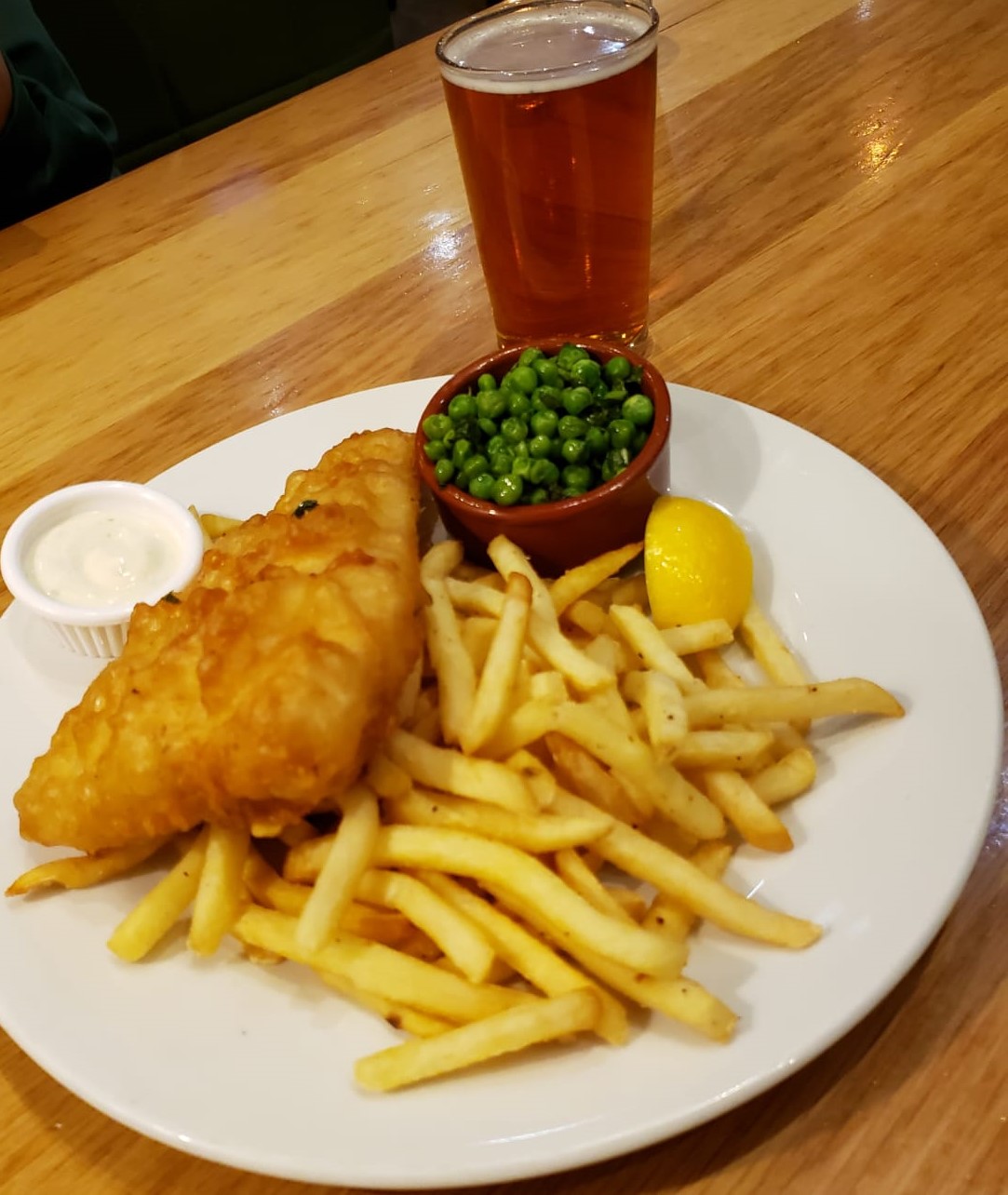There are few culinary delights as quintessentially British as a steaming plate of fish and chips. This iconic dish, with its golden, crispy exterior and succulent, flaky fish, has been a beloved staple in the United Kingdom for generations. However, the question of its true origins remains a subject of spirited debate. Is fish and chips an English dish, or does its heritage trace back to Ireland?
Let’s embark on a journey through history to uncover the fascinating story behind this delectable comfort food.
The Birth of a Culinary Icon
During the mid-19th century, England was undergoing a period of rapid urbanization and industrialization. With cities expanding and populations booming, there was an increased demand for affordable and convenient food options, especially among the working-class communities in bustling port cities and coastal towns.
It was in this dynamic and ever-changing environment that fish and chips emerged as a culinary sensation. The combination of fresh, locally caught fish and readily available, budget-friendly potatoes proved to be a perfect marriage of convenience and flavor. The fish provided a source of protein, while the fried potatoes, which were both filling and inexpensive, offered a hearty accompaniment.

Key to the success of fish and chips were the contributions of immigrant communities, particularly those of Jewish and Portuguese descent. These communities had a profound impact on the development of the dish. Jewish immigrants, for instance, brought with them the tradition of frying fish in oil, drawing from their own culinary practices. This technique elevated the dish, imparting it with the crispy, golden exterior that has become its hallmark. The combination of fresh, locally caught fish and affordable, readily available potatoes proved to be a match made in culinary heaven. Fish and chips quickly became a go-to meal for the working class, offering a hearty and affordable source of sustenance during an era of rapid industrialization.
The Irish Connection to Fish and Chips
The connection between fish and chips and Ireland is a subject that sparks much debate among culinary enthusiasts and historians alike. While this iconic dish undoubtedly thrived in the bustling ports and coastal towns of England, its presence in Ireland is a point of contention. Many argue that fish and chips also found favor in Ireland, particularly in the coastal regions blessed with easy access to an abundance of fresh seafood. In these picturesque Irish towns, locals and visitors alike reveled in the opportunity to indulge in this hearty and satisfying fare. In fact, evidence of Ireland’s affection for fish and chips can be found in the numerous fish and chip shops that pepper towns and cities across the country. These establishments boast their own unique histories and culinary traditions, underscoring the deep-seated love that the Irish have for this comforting and flavorful meal. The presence of fish and chip shops in Ireland is not merely a culinary phenomenon; it’s a testament to the enduring appeal and adaptability of this dish. Whether served in the narrow alleys of a historic Irish town or on a bustling street corner in an English city, the popularity of fish and chips knows no bounds, transcending borders and leaving a lasting mark on the culinary landscape of both nations.
A Culinary Crossroads
The debate surrounding the true origins of fish and chips serves as a testament to the intertwined histories of England and Ireland. Both nations have made significant contributions to the evolution of this beloved dish, solidifying its place as a cherished component of their respective culinary heritages.
While the foundational elements of fish and chips—fresh fish, potatoes, and frying—remain consistent, there are subtle variations that reflect regional preferences and techniques. In England, for instance, the batter used to coat the fish is typically made with flour, water or beer, and sometimes a leavening agent like baking soda. This creates a light, airy coating that crisps up beautifully during frying. In Ireland, on the other hand, you might find variations in the batter recipe, influenced by local tastes and traditions. Some Irish preparations may include additional seasonings or variations in the type of flour used, resulting in a slightly different texture and flavor profile. Despite these subtle distinctions, the heart and soul of the dish remain the same: the harmonious marriage of crispy, golden-brown batter and succulent, flaky fish.
Classic Fish and Chips to make at home
For the Fish and Chips: Begin by preparing the key components of this beloved dish. Peel and cut four large russet potatoes into evenly-sized, thick strips. It’s important to rinse them thoroughly in cold water to remove excess starch, ensuring they achieve that perfect crispy texture when fried. Gently pat them dry with a kitchen towel and set them aside. Next, it’s time to parboil the potatoes. Place them in a large pot of vigorously boiling water and let them cook for about 3-4 minutes. They should be just tender enough to yield slightly when pierced, but not so soft that they lose their shape. Once this brief parboiling is complete, drain the potatoes and carefully lay them out on a paper towel-lined tray. This step allows any excess moisture to evaporate, ensuring the chips achieve a delightful crunch when fried.
For the Batter: To create the light, crispy coating for the fish, you’ll prepare a simple yet crucial batter. In a generous-sized mixing bowl, combine one cup of all-purpose flour, one teaspoon of baking powder, one teaspoon of salt, and half a teaspoon of black pepper. These ingredients form the foundation of the batter, contributing to both its texture and flavor. Gradually incorporate one cup of cold sparkling water into the dry mixture while whisking continuously. This step is crucial, as it ensures the batter achieves a smooth, lump-free consistency. The addition of sparkling water imparts a delicate effervescence, resulting in an airy, golden coating that perfectly encapsulates the fish.
Frying Process: With the potatoes parboiled, it’s time to turn your attention to the hot oil. Fill a large, deep pot with enough vegetable oil to completely submerge both the fish and chips. To achieve the ideal frying temperature, use a reliable deep-fry thermometer to heat the oil to 350°F (175°C). This ensures that the fish and chips cook evenly, achieving that perfect balance of crispiness and tenderness. Carefully lower a batch of parboiled chips into the hot oil using a slotted spoon. Allow them to fry for approximately 3-4 minutes, or until they acquire a beautiful golden hue and a satisfying crunch. Once they’ve reached this desirable state, carefully remove them with the slotted spoon and transfer them to a paper towel-lined tray. Sprinkle them generously with salt while they’re still warm, enhancing their flavor and providing that classic chip taste.
Cooking the Fish: Now, it’s time to coat the fish in the carefully prepared batter. Take each fillet of white fish, such as cod or haddock, and dip it into the batter. Be sure to allow any excess to drip off, ensuring a light and even coating. The batter’s unique combination of ingredients will cling to the fish, creating a protective layer that seals in moisture and imparts that signature golden-brown finish. Gently slide the battered fish into the hot oil, one or two pieces at a time. Fry them for approximately 4-6 minutes, or until they achieve a delectable golden brown coloration. This visual cue indicates that the fish is cooked through and beautifully crispy on the outside. Retrieve each fillet with a slotted spoon and allow any excess oil to drain on paper towels.
With both the fish and chips expertly fried to perfection, it’s time to serve up this quintessential British dish. Arrange the crispy fish alongside the golden chips, and if desired, garnish with an additional sprinkle of salt for added flavor. For a truly authentic touch, consider traditional accompaniments like malt vinegar, tartar sauce, and a side of peas
Whether we attribute its creation to the streets of Victorian England or the coastal towns of Ireland, there is no denying the enduring appeal of fish and chips. Its golden, crispy exterior and succulent, flaky fish continue to captivate palates and warm hearts across the globe. So, the next time you savor this iconic dish, relish in the rich history and culinary traditions that have made fish and chips a cherished part of our collective gastronomic heritage.






